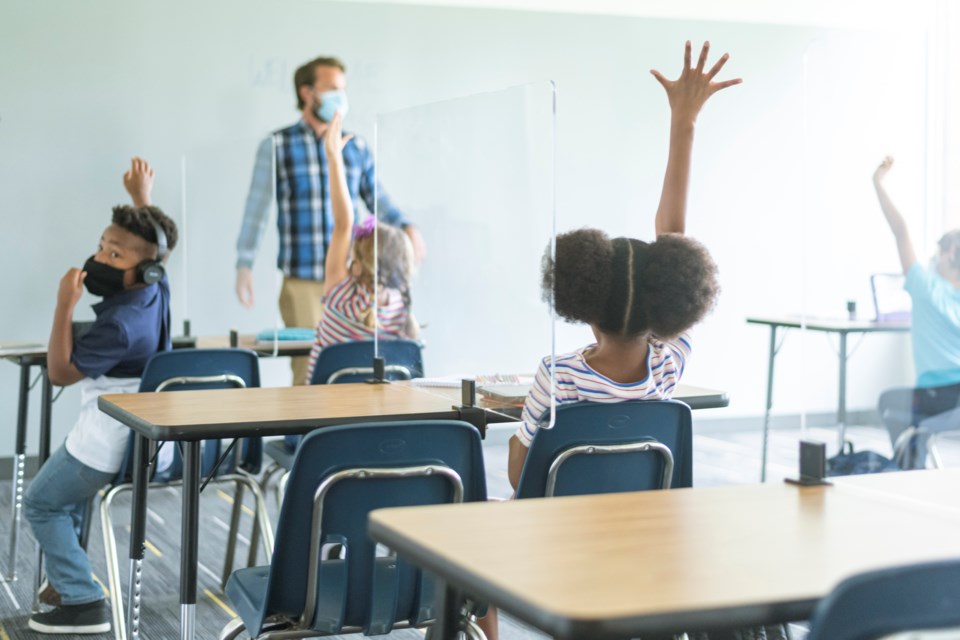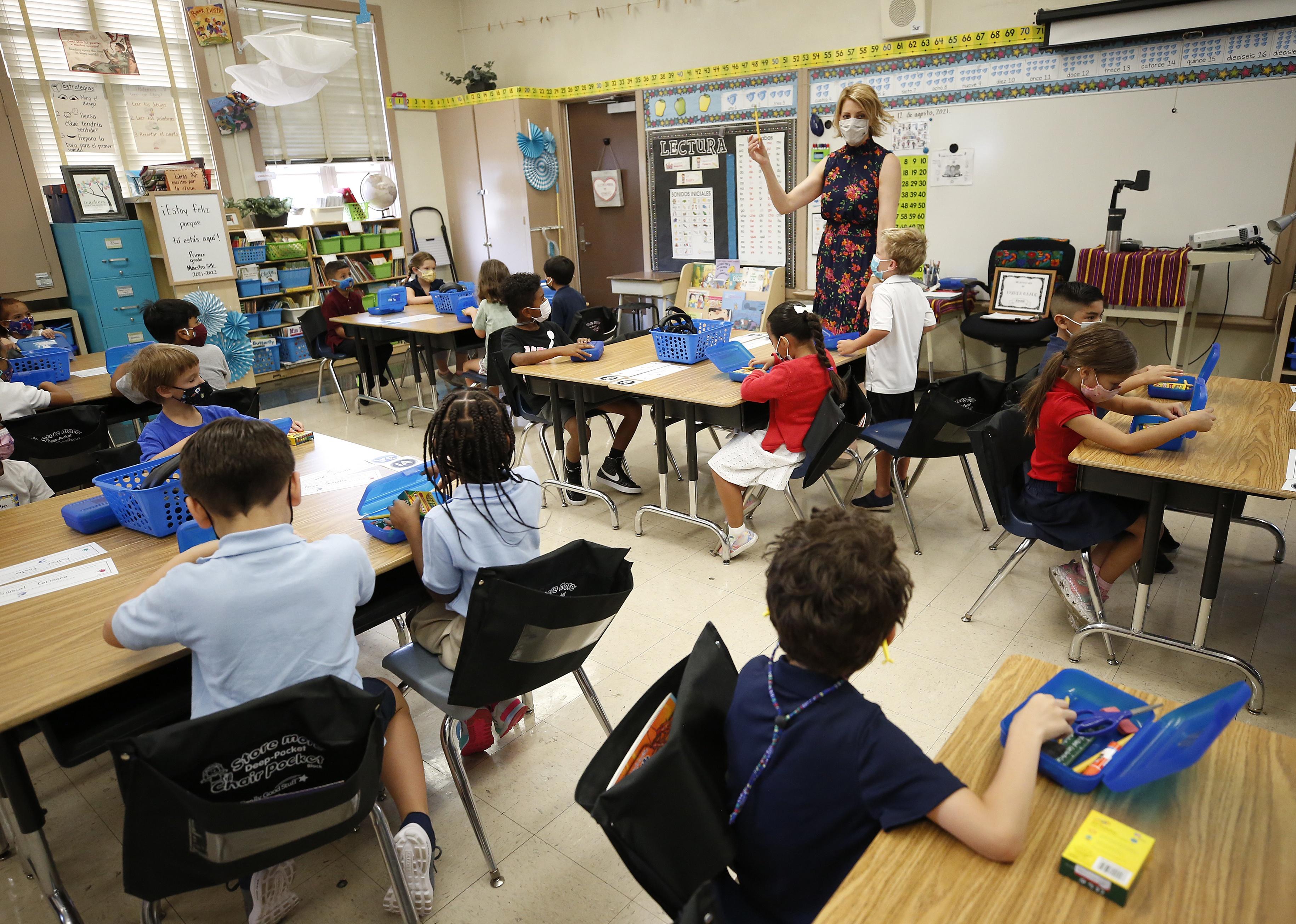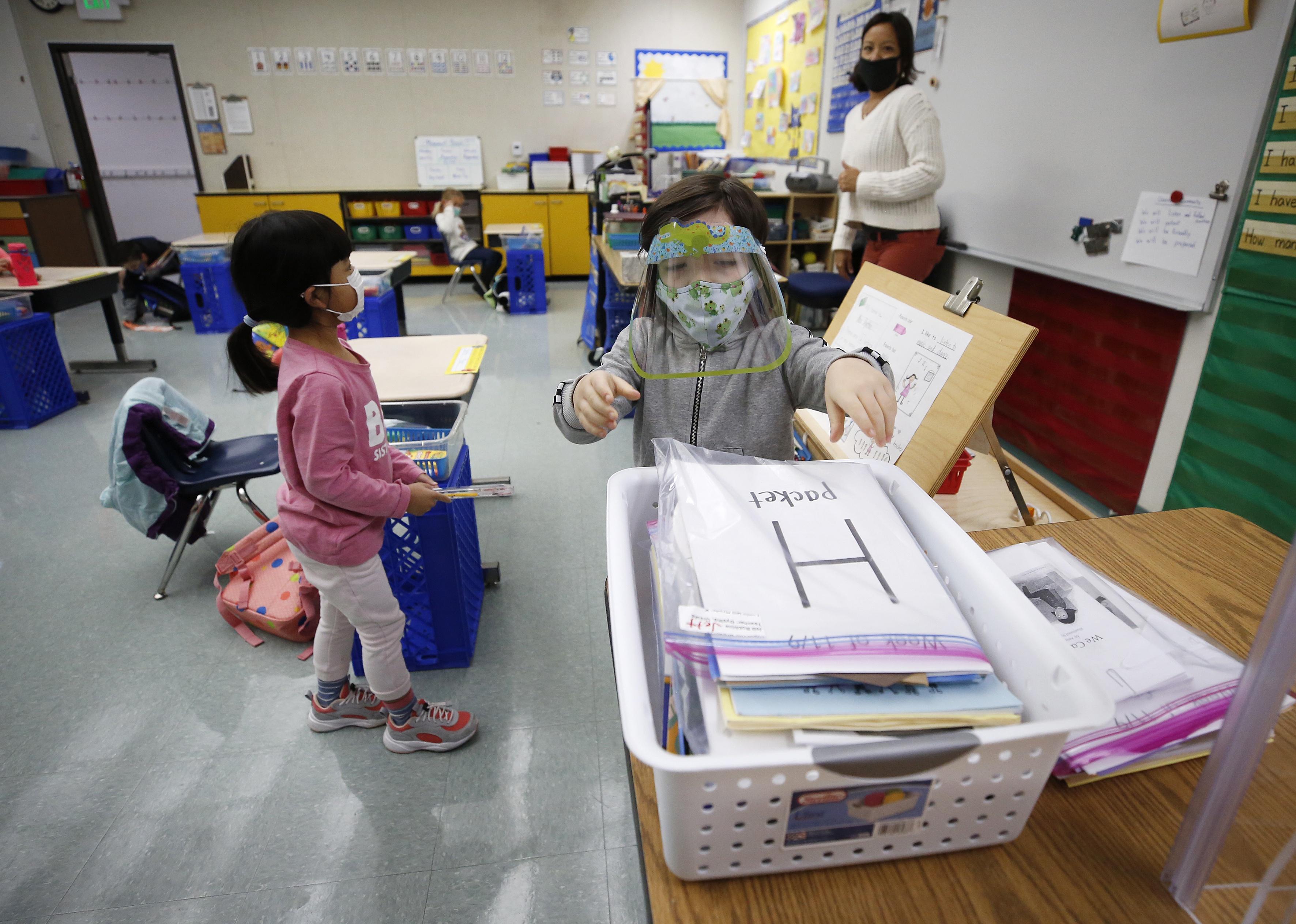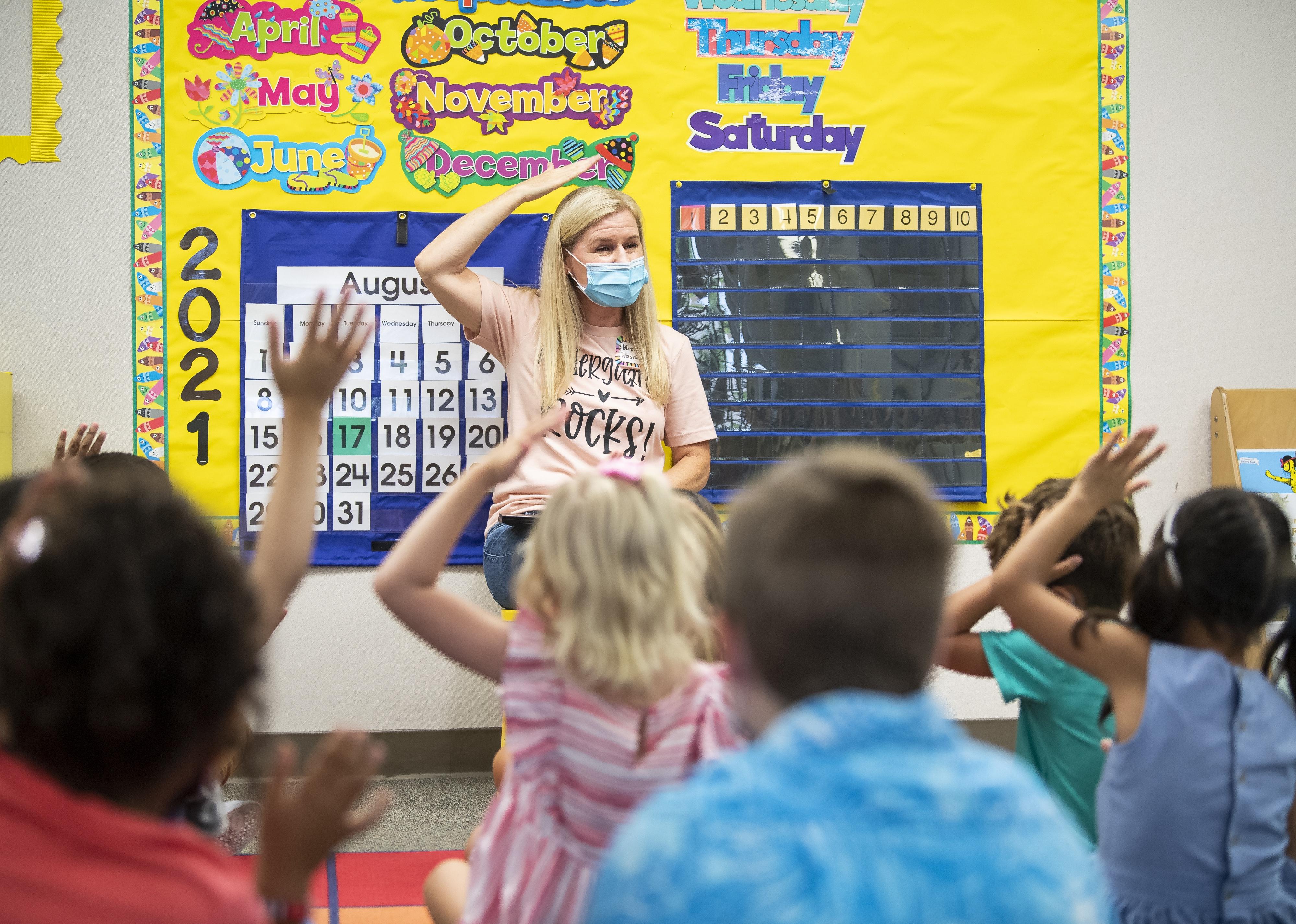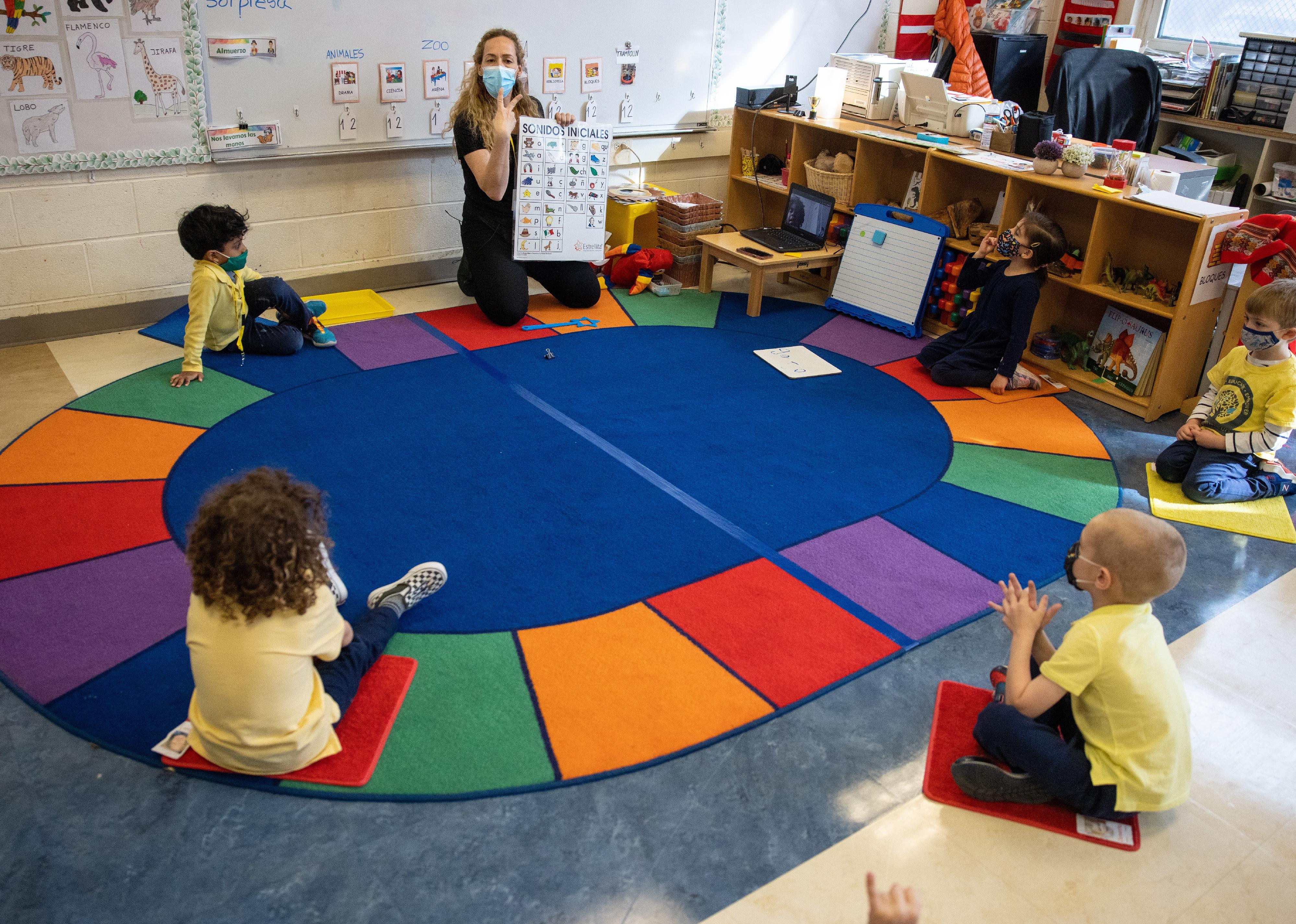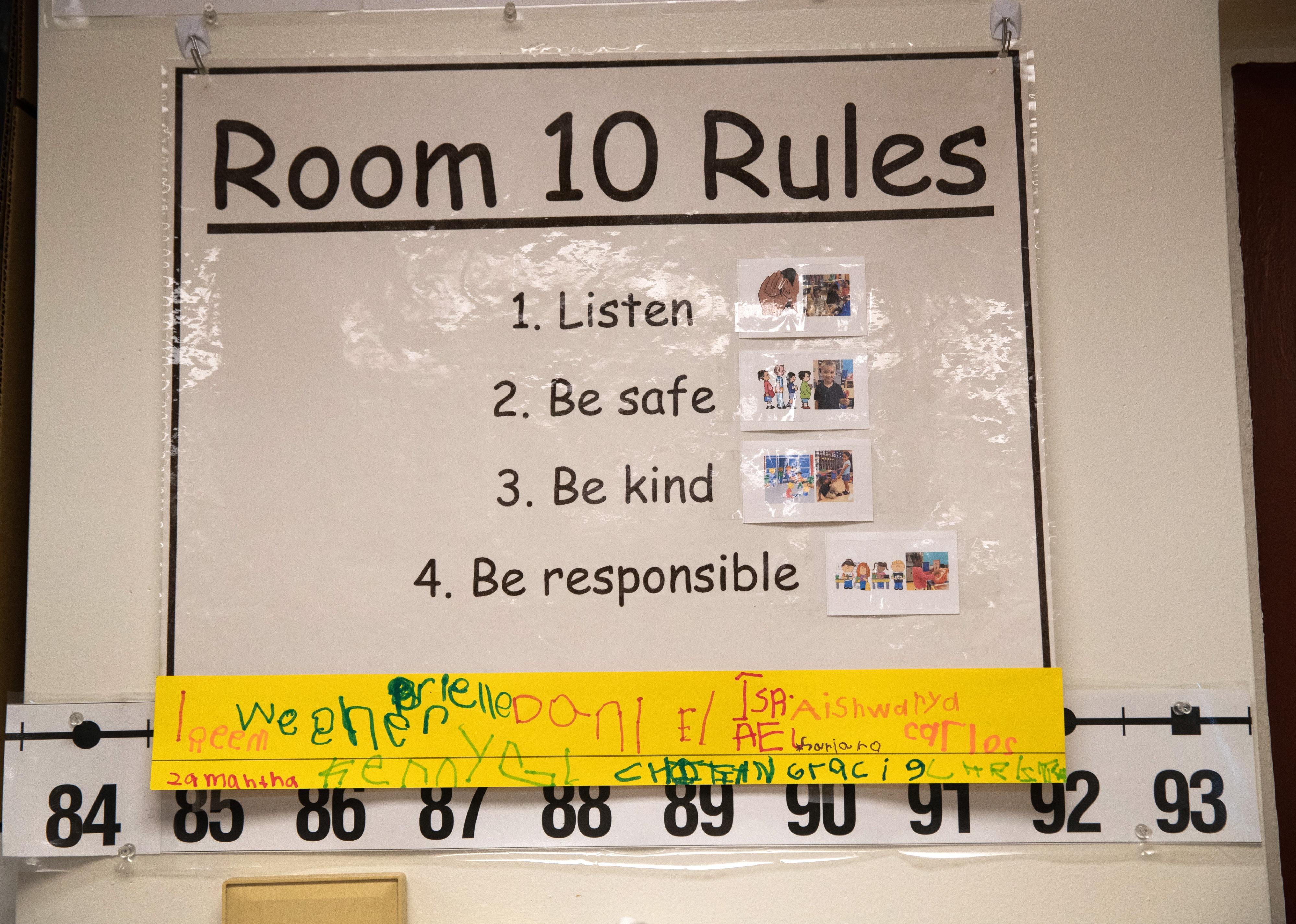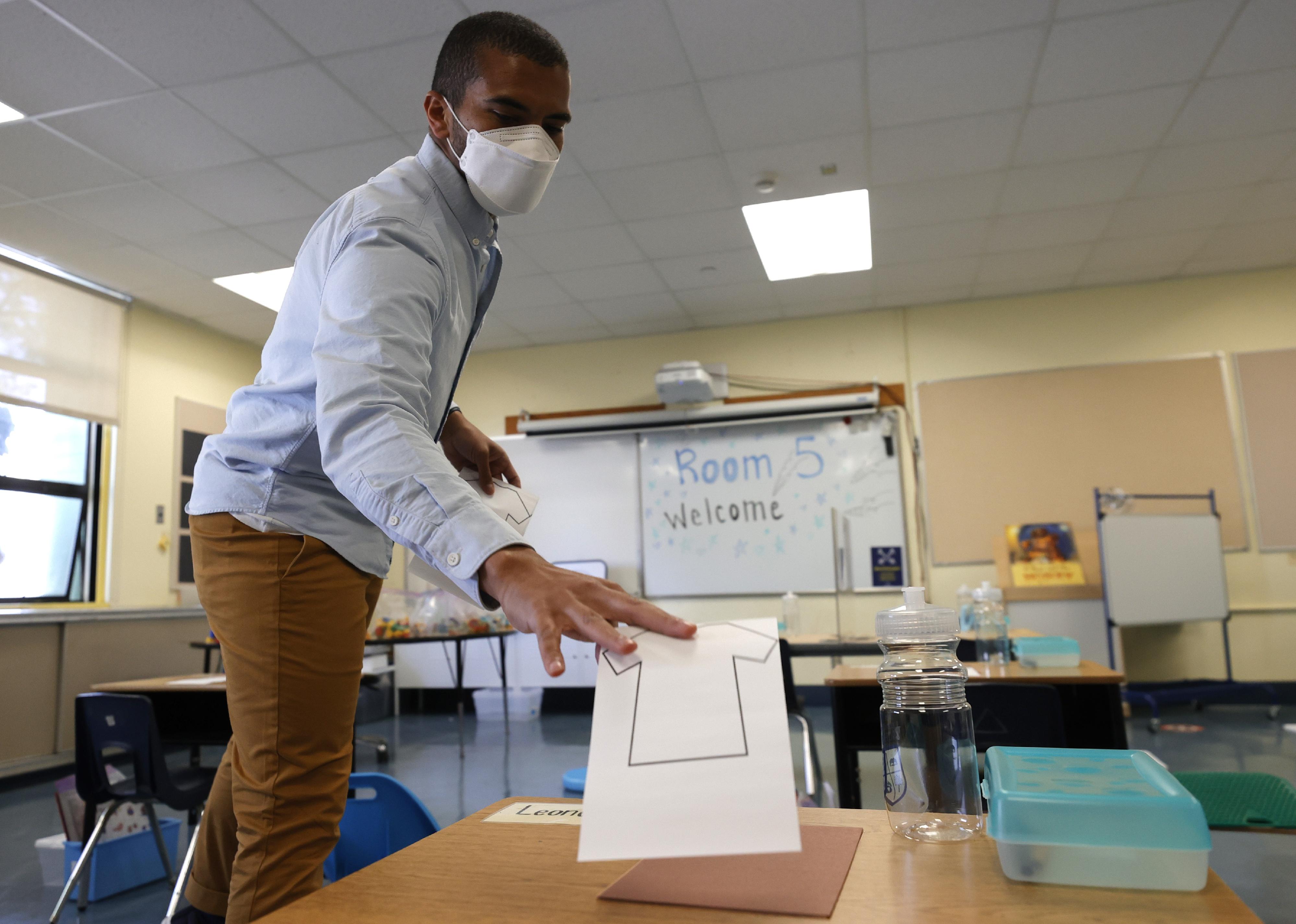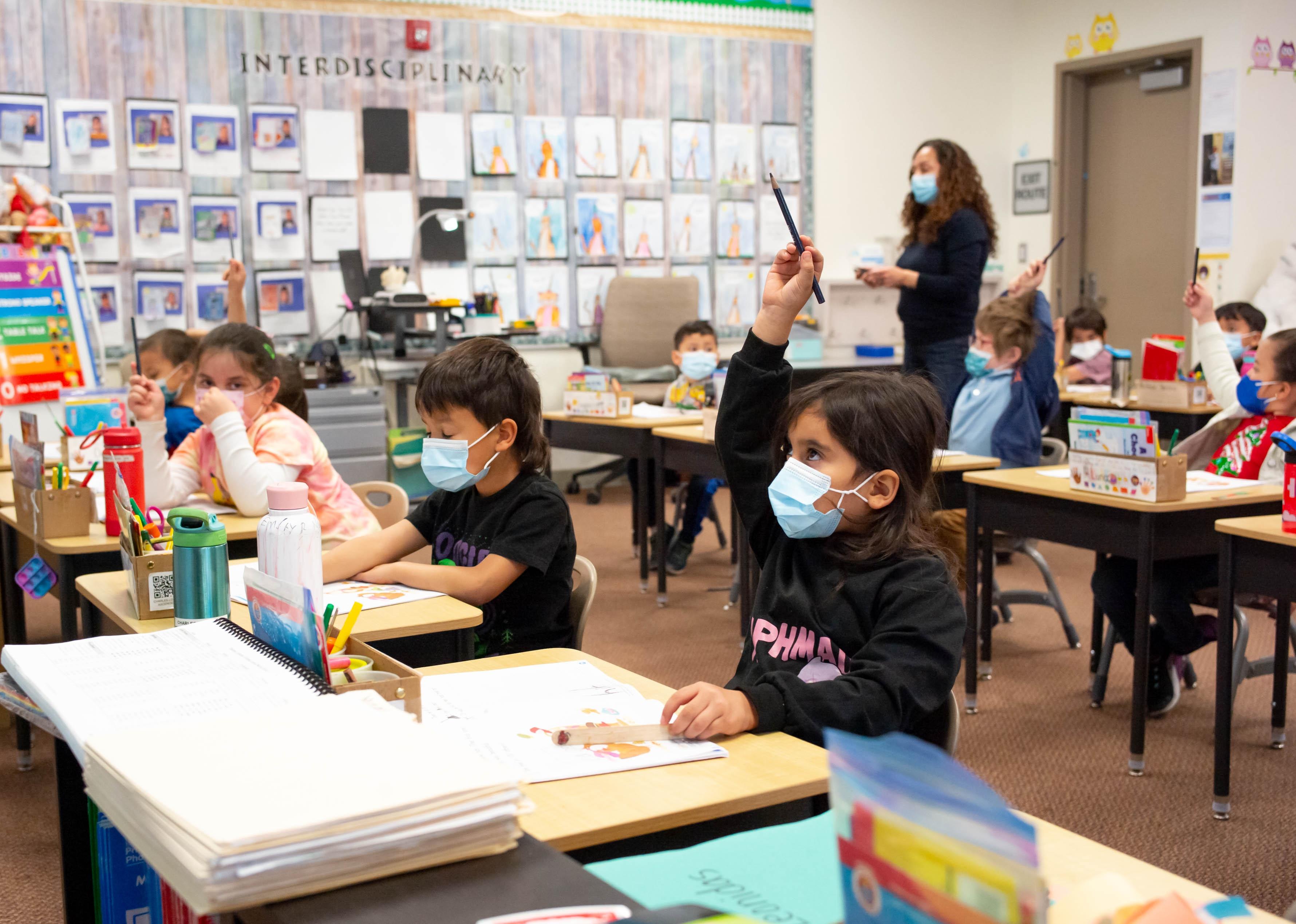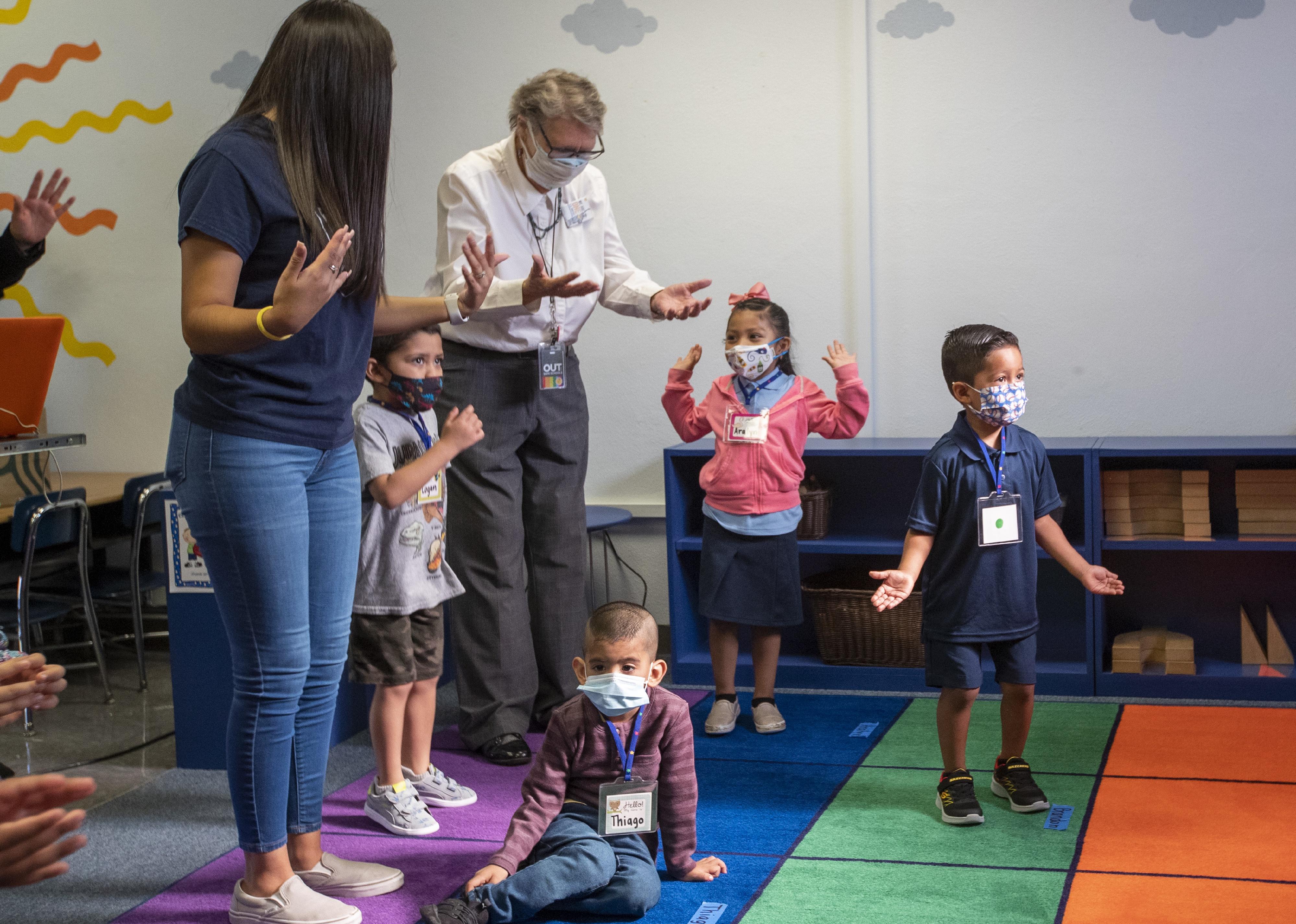Kindergarten teachers must be many things: educators, caregivers, disciplinarians, and exemplars of kindness and patience. eSpark looked at the skills rated most important for being a kindergarten teacher, citing data from the Occupational Information Network O*NET, the BLS, Workable, and other sources.
Teaching at this level is among the most challenging vocations a person can enter—taking on responsibility for children's educational and emotional development—but it can also be a worthwhile career offering stability and a decent standard of living. The median pay for kindergarten teachers, while below the national median household income level, was competitive among nonspousal (or single-income) households at $60,900 per year, according to Bureau of Labor Statistics data from 2021.
The job market for kindergarten teachers is healthy, as shown by BLS data. As of 2021, there were 1,487,000 kindergarten teaching positions in the U.S., and the job outlook through 2031 is 4% growth—on pace with the average job outlook across all industries.
More than 120,000 new positions are expected annually at the kindergarten and elementary levels. A bachelor's degree in elementary education is usually required to become a kindergarten teacher; in some states, kindergarten teachers must also have majored in a specific content area.
Sometimes, certifications and a master's are also required. In all states, public school teachers must be certified or licensed in the grade level they will be teaching. However, this is not usually the case for teachers teaching in private schools.
When it comes to on-the-job training, however, there are two sides to the coin. There is little requirement for new teachers, but even less made available despite kindergarten teachers requiring a range of skills to be successful and provide the best environment for their students.
Read on to find out which skills are rated most important for kindergarten teachers.
#10. Service orientation
Service orientation means being able to help others and wanting to serve them, being aware of the specific needs that students have, and responding to those needs.
There are many strategies teachers can use to meet their students' needs, such as collaborating with colleagues so that all teachers sync with each student's individualized education plan. If a child has a learning disability, a school may provide the student with appropriate support in each class.
Another strategy is cultivating consistency by using methods such as reviewing information from the last lesson in the current lesson and using the same procedures and policies across classes.
Additionally, teachers should develop a student-centered mindset by knowing about all the individual considerations each student needs and trying to understand why a student is struggling to help them. Teachers should also have a set time to focus on pedagogical skills, draw on the expertise of other professionals, and partner with students' families to make learning a holistic process that offers a consistent message at school and home.
A good teacher should also respond to their students' needs creatively. Every student has different needs, and a good teacher should be able to serve all of them in different ways. For example, a teacher can employ a variety of entry points for student exploration, some of which include narrational (presenting a topic as a story), experiential (as in, hands-on), and aesthetic (focusing on sensory features).
#9. Time management and flexibility
Teachers have to manage their time to balance long-term educational goals and their students' immediate educational needs, handling paperwork related to assignments, creating lesson plans, issuing grades, and creating progress reports.
Time management strategies include strategically planning homework assignments by having students do repetitive practice at home, grading and creating progress reports in batches, and organizing each day by prioritizing the most critical tasks. They also include planning for potential crises in the classroom to take up less time and prioritize personal time for themselves to avoid exhaustion.
Teachers must also have good classroom management. One less-than-obvious way to do this is for teachers to take care of themselves and their students—to focus on their well-being to be their best selves in the classroom. Other strategies include building student-teacher relationships, connecting with challenging students to understand where they're coming from, involving parents and guardians in educational plans, and setting expectations, boundaries, and rules early on.
Good classroom management also includes being flexible; for example, spending more time on teaching skills that students need more help with, such as reading or math, or adjusting to the rhythm of the class, as opposed to simply barrelling through the set curriculum.
Adaptation to student needs—for example, checking that the mode of instruction is appropriate for a student with a learning disability—is also crucial. So is the regular use of creativity in everyday activities, as it motivates learning, improves skills such as critical thinking and problem solving, and builds emotional development.
#8. Reading comprehension
Learning reading comprehension at an early age is a process that involves two things: understanding systemic phonetics—in other words, learning the information necessary for knowing how to pronounce a word out loud after seeing it written out—and learning how to decode text.
By learning systemic phonetics, a child will eventually be able to recognize words and fluently read connected text automatically. By learning how to decode text, they'll be able to understand what they're reading and become fluent readers.
Students who learn reading comprehension in an alphabetic language like English benefit from understanding that written letters stand for spoken sounds and learning to recognize letter-sound patterns as words that "match" spoken words—the meanings they already know.
To teach reading comprehension at an early age, teachers must use explicit phonics instruction, which involves teachers sequentially and systematically teaching their students letter-sound relationships, which will help them decode words. Teachers can use a phonemic awareness warm-up to help students connect a sound to how that sound looks in print.
#7. Coordination
Coordination in the classroom is a product of balance and organization. When it comes to organization, teachers should always have a lesson plan prepared, which will help them approach their lessons confidently, manage time in the classroom more effectively, and align their students' learning with school, state, and national standards.
Lesson planning also allows teachers to track their progress by reviewing past lesson plans, keeping their students' learning consistent, and making the handoff to substitute teachers smooth and easy.
Good lesson plans always have students in mind (as opposed to a more rigid model) and are organized by a typical structure. A lesson plan should outline various classroom activities, while also leaving space for discussion and setting objectives that are specific, measurable, attainable, relevant, and time-based—or SMART—for each lesson.
A teacher should also be able to balance kids' fun and play times with a structured and safe learning environment that includes the execution of a curriculum. For example, a teacher could mix play and learning by taking their students on a nature walk, where they'll have fun and, by observing the natural world around them, be able to learn about habitats, various species, and other scientific facts related to nature.
#6. Speaking
While it may seem obvious, it's important to stress the importance of kindergarten teachers' ability to talk to others effectively. Because children develop their language patterns by following the model adults use, teachers need to reinforce the proper speaking habits through examples, such as using correct grammar and precise vocabulary and expression.
To do this most effectively, teachers can initiate conversations with their students by asking questions, such as what they've done that day, and encouraging them to elaborate on their answers—in other words, ask leading questions. This will help students improve their vocabulary and conversation skills.
Teachers can also show their students that they're genuinely listening by using eye contact, facial expressions, and proximity. If students feel that their teacher is interested in what they're saying, it is much more likely that they will continue communicating with enthusiasm and sincerity.
#5. Monitoring
Monitoring requires teachers to constantly assess their and others' performance and use those assessments to improve strategies. When teachers evaluate their teaching, they are continually improving their students' learning experience. Teachers can use methods to assess their work, including reviewing the content they've covered, course materials they've provided, and modes of instruction, including group work or technology use.
Scrutinizing more general and transferable aspects of their teaching, such as language, tone, or personal style, enables teachers to continually evaluate their performance and get informal feedback from students and colleagues. One measure of success can be found in student assessments, which help determine whether students have understood the content.
Student progress monitoring can occur in a variety of ways. A lesson can begin, for example, with a few quick review questions to determine if students are struggling. If students appear to be having difficulties, teachers can review the material with the whole class or help individual students.
Teachers can also monitor students' progress during a lesson, using strategies like questioning, board work, noting eye contact to ensure that students are paying attention, and getting closer if they are not.
An exercise like "1, 2, 3"—where the teacher stops mid-lesson to ask students if they understand, with three fingers up meaning they do, two meaning they're a bit confused, and one meaning they don't know what the teacher is talking about—can indicate if the lesson needs to be adjusted.
At the end of a lesson, teachers can also monitor progress by circulating and engaging with each student individually, providing exit slips or exit tickets, and giving students interactive multiple-choice questions—for example, directing students to run to area "A" of the classroom when they think they've heard the correct answer.
#4. Development and implementation of lessons
Developing and implementing lessons involve selecting and using appropriate training methods when learning or teaching new things. There are several basic teaching methods a teacher might use. Conference learning allows for individualized attention for each student and is particularly useful when students struggle with a subject or the social aspect of school.
Cooperative learning can instill the importance of teamwork and also help with socialization. A hands-on approach is a straightforward "follow my example" method, while the play method gives children the chance to focus on fun while still engaging with a larger lesson plan. Bringing creative and artistic touches to their teaching method can help teachers carry out their planned lessons.
One example might be arts and crafts activities such as making paper bag jellyfish, stamps out of fruits and veggies, or popsicle stick animals. Students will learn various skills while thinking creatively and having a good time in the mix.
One further and critical point: Patience cannot be underestimated as a necessary quality for any kindergarten teacher. Kids have different backgrounds and, thus, different abilities and behaviours. No matter their learning level, they will all be looking to the teacher for guidance and examples of behaviour to follow.
#3. Communication and active listening skills
To teach groups and individuals effectively, a teacher must have strong communication and active listening skills. Regarding communication skills, particularly at the kindergarten level, teachers must be adept at receptive and expressive communication to listen to their students effectively.
Teachers must often read between the lines because kindergarteners sometimes use simple words to describe complex thoughts and feelings. Moreover, teachers must be able to tailor their communication methods to all their students regardless of learning style or ability.
Body language and tone of voice can convey caring and concern. Thus teachers should get to know their students and constantly encourage them and celebrate their successes. Doing so will make them feel validated and recognized and encourage them to improve.
Regarding active listening skills, teachers must pay full attention to what the kids are saying—ask them questions, don't interrupt them, and talk to their parents. These strategies help students to become better listeners, as they will model this behaviour after seeing their teachers do it.
#2. Social perceptiveness
Perceptiveness in the classroom is not simply a matter of noticing who is not paying attention; it means being aware of how children react and, perhaps more importantly, understanding why these reactions happen.
Teachers who develop social-emotional competencies are less likely to become burned out because they will be able to work with challenging students more effectively—and challenging students are among the main reasons for burnout.
For example, when dealing with a disruptive student, instead of using punishments right away, a teacher with developed SEC will be able to recognize the emotions the student is feeling, have insight into the cause of these emotions, and respond with compassion and understanding. They will then be able to appropriately re-direct the student's behaviour.
Classrooms, where students and teachers practice respectful problem-solving and communication and transition smoothly between activities, are built by teachers with SEC based on lessons that encourage a love of learning and student engagement.
Teachers with SEC have high social- and self-awareness, are good at building supportive, strong relationships, set firm yet respectful boundaries, deal with conflict effectively, and consistently demonstrate kind and helpful behaviour.
#1. Instructing
Classroom instruction is more complicated than it might seem. Kindergarten teachers need to be able to teach children who are still in the very early part of their learning development how to do something. The most effective teachers can use multiple teaching strategies to diversify their ability to put together exciting lesson plans and have the best chance of reaching all students regardless of their learning level or level of learning confidence.
Recommended strategies include using integrated technology; cooperative learning structures, where students work together in groups or with buddies; blending subjects such as language arts and science; and differentiated instruction, where teachers tailor the learning experience in the classroom to cover kinesthetic, auditory, and visual learning styles. The kinesthetic learning style, for example, might rely on motion, movement, and touch in the classroom.
Goal-setting is another effective instructional approach, which asks students to take ownership of their learning; this approach may require using charts or other visual organizational trackers that allow students to monitor their learning progress.
This story originally appeared on eSpark and was produced and distributed in partnership with Stacker Studio.
